Rococo revival in Tianjin
Ten years after my previous trip to Tianjin, I returned for a second time. This time my primary goal was to visit the Binhai ghost town, one of the two most famous ghost towns of China (the other being Ordos.)
Tianjin is almost a poster child for the sort of reckless Chinese malinvestment that people like Michael Pettis often point to. In the Binhai section of town (about 25 miles from downtown Tianjin) there’s a huge forest of mostly empty skyscrapers on both sides of a big river. This was supposed to become the Manhattan of China, but it turns out that very few people want to work there. Maybe they thought the geographic similarity to Canary Wharf would work wonders. Here’s the FT, from January 2018:
Tianjin, one of the big ports that services northern China, could also see a revision. Its Binhai financial district, which offers tax and foreign exchange incentives to registered businesses, swelled to comprise roughly half of Tianjin’s reported GDP last year.
Binhai included in GDP the commercial activity of companies that were only registered there for tax purposes, according to revelations last week. That could result in a 20 per cent drop in reported GDP for Tianjin in 2017, according to FT calculations. Binhai’s high debt levels and access to domestic and international financing make its phantom results a concern for broader markets.
I decided to visit in the hope of finding the conventional view was wrong and that the place was making progress. The only person we spoke with in Binhai insisted that things were fine, and that business was great. Alas, he was obviously lying—it really is a ghost town. You feel like you are in a huge American suburban office park on Sunday morning, not in urban China. (Technically, it’s a ghost neighborhood, or ghost central business district, as Binhai itself has roughly 3 million of Tianjin’s 16 million residents.)
We went to Tianjin using China’s high speed rail system. This system seems to have an increasingly severe “last mile problem”. The trains themselves are first rate, but the service on either end has deteriorated over the past decade. The Beijing South train station is far bigger, but not as nice. The security is overdone to an almost laughable extent. There are now three layers of control before reaching the tracks. You need a passport. The trains are often sold out. The stations are a bit too far from city centers.
Upon returning, to Beijing, we were told there was an hour’s wait for a taxi, which is quite common. (Fortunately, there’s also a subway.) Yes, it’s only 30 minutes from Beijing to Tianjin by HSR, but the Chinese need to learn the fine points of customer service from the Japanese, where the total experience of train travel is far more pleasant.
Don’t get me wrong, once on the train the ride is great. And the stations are still light years ahead of Penn Station in NYC. What’s so frustrating is that the Chinese have gotten the hardest part (the hardware) right, but fallen down on the easier steps. There’s a lot of that in China.
Tianjin loves to borrow styles from other times and places. Downtown has a bunch of imitation 19th century European buildings all along the river, and bridges that look like Paris.
The library in Binhai looks like something that French architects such as Ledoux or Boullee might have come up with (and I mean that as a compliment.)
The roof of the grand entryway to the Tianjin train station has a giant (60 ft?) rococo mural that will make your jaw drop:

Closer up, it looks like a Tiepolo imitation done by an American art nouveau painter, circa 1905:

I love the fact that at least one country is still optimistic about the future.
In a brand new Binhai park, we saw a midcentury modern pavilion:
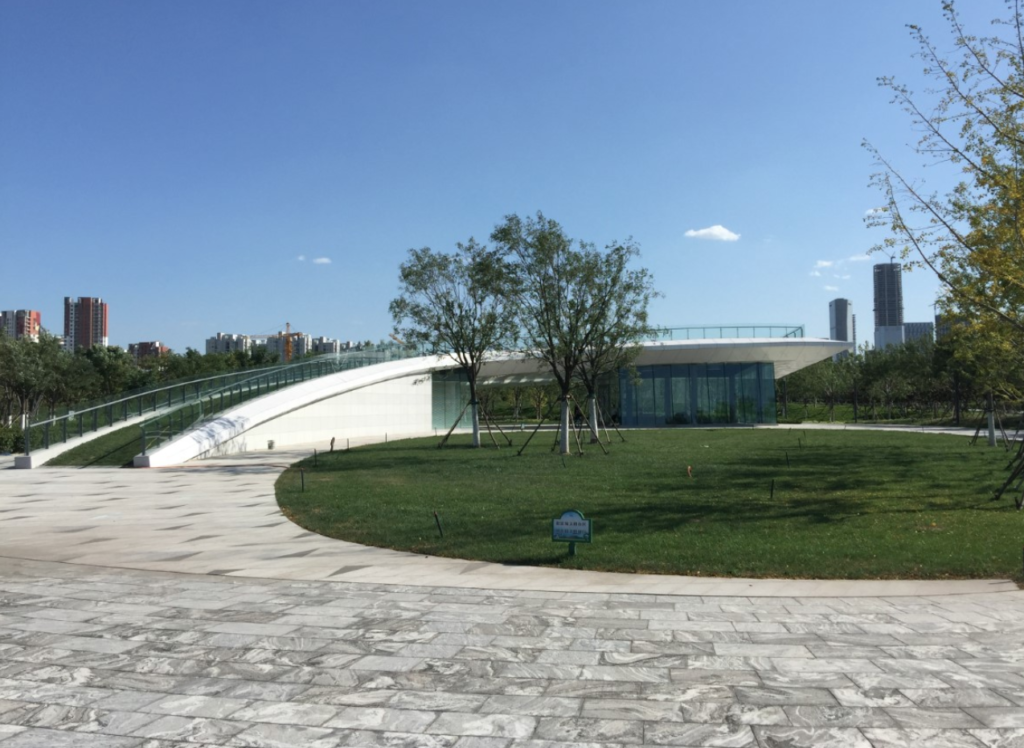
The huge, underground, and mostly empty Binhai train station roof looks like a Santiago Calatrava:
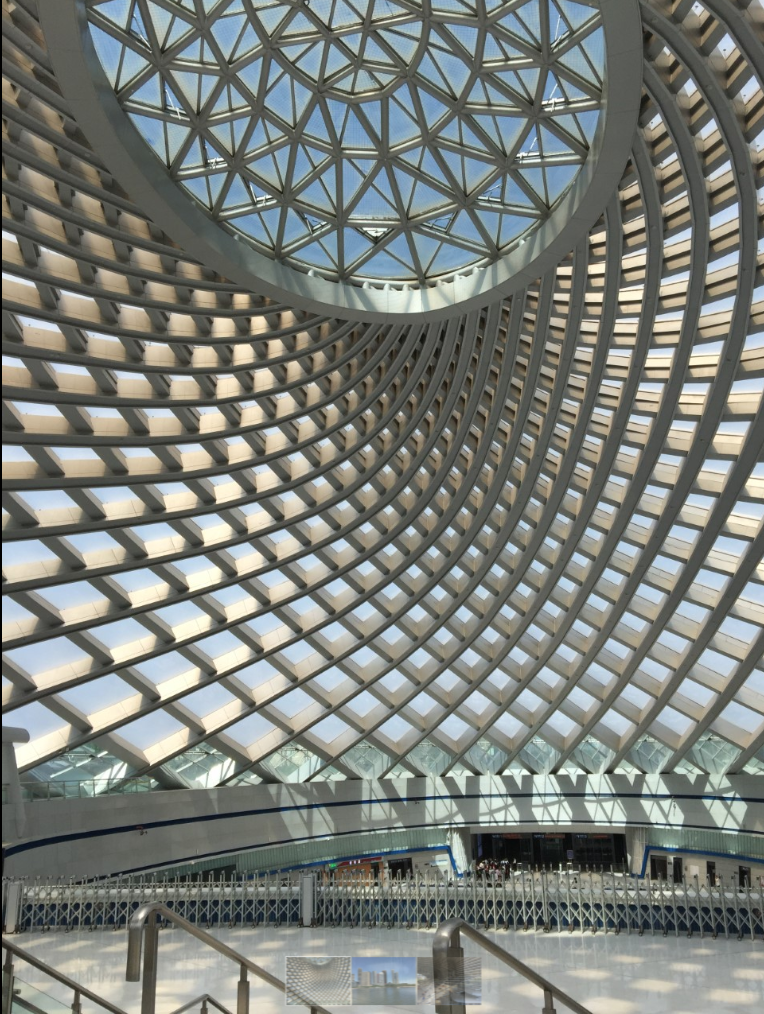
Nearby in Binhai you’ll find a pair of giant buildings (government?) in the Mussolini style. They are bigger than they appear in this picture:
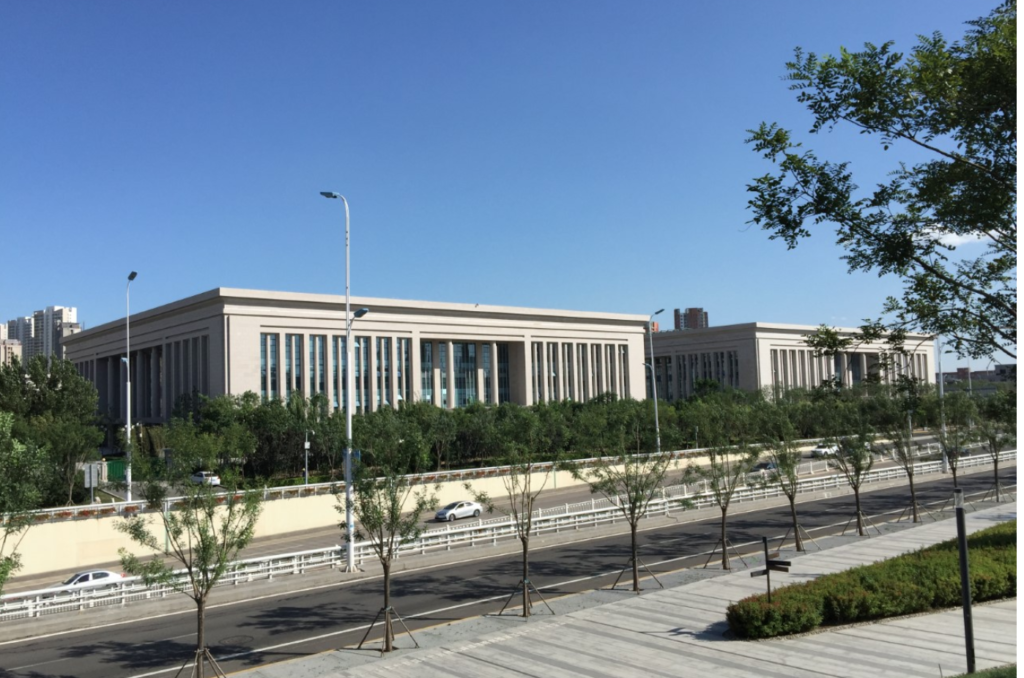
And since “this is China” (the favorite phrase of my daughter and I) they had to include a building in this remote suburban district that is taller than anything in the western hemisphere:
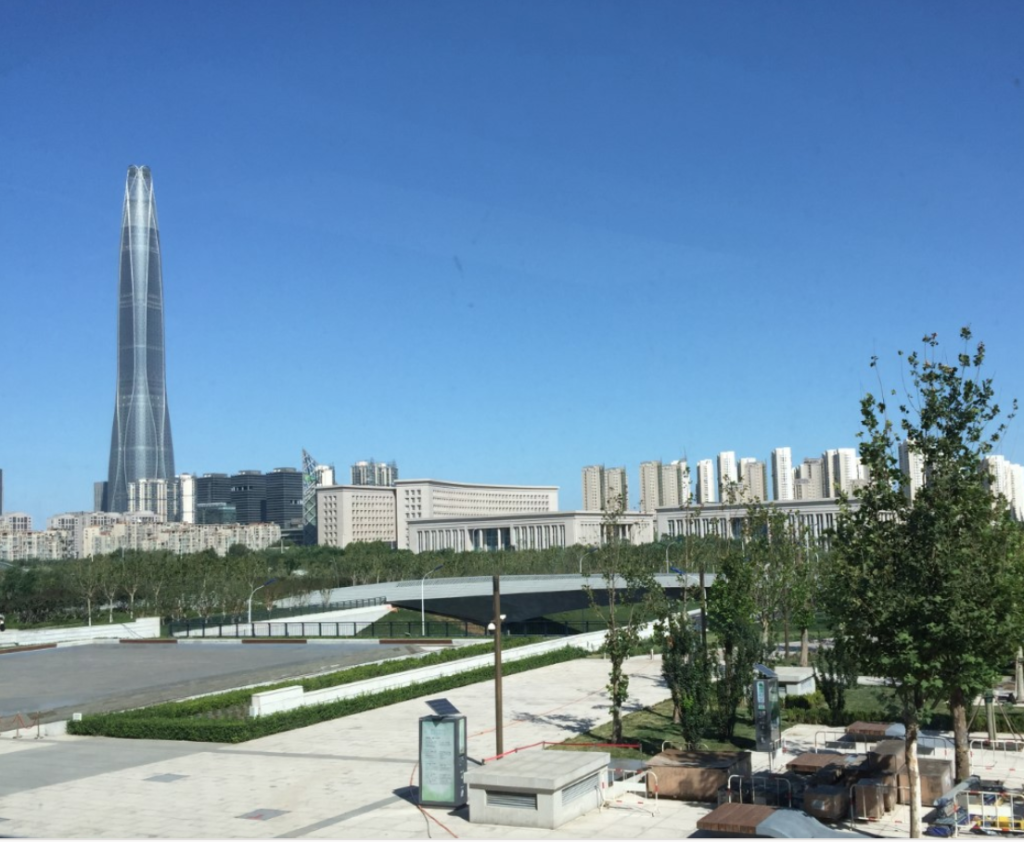
Saturn V meets Freud. And no, I don’t count that stupid spike on the top of the supposedly 1776-foot “Freedom tower”.
And this isn’t even the biggest building in Tianjin, an even taller skyscraper stands 90% completed, but on hold, in another ghost neighborhood on the fringes of Tianjin:
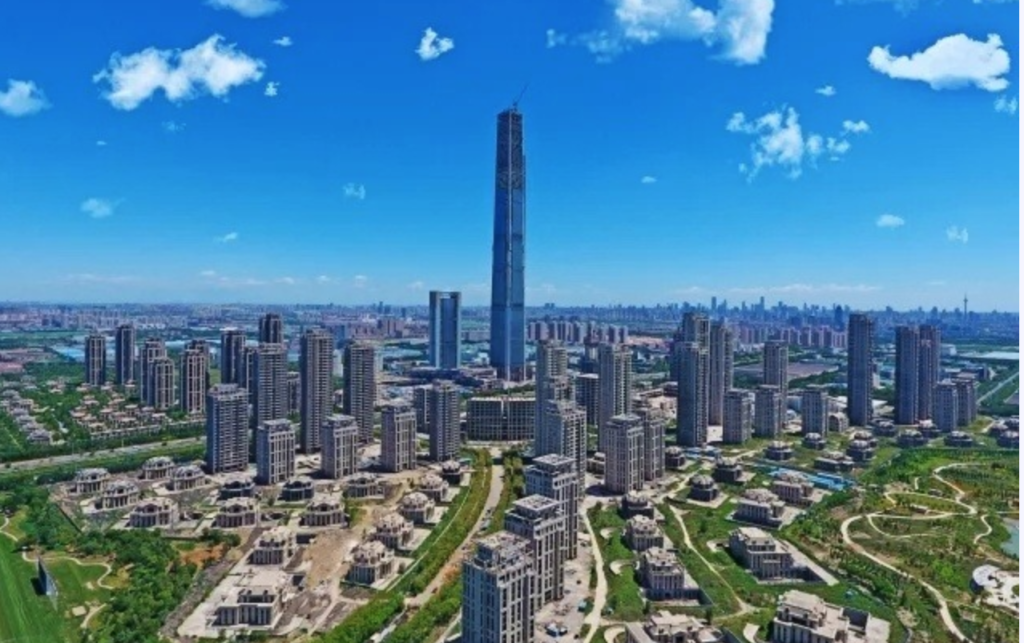
Speaking of Freud, I assume that Tianjin’s former mayor had an edifice complex. Sorry.
BTW, he’s now in prison, sentenced for corruption.
With 1.4 billion people and lots of tall buildings, you’d assume that urban China is dense. Actually, it’s nowhere near as dense as it should be (except for Hong Kong.) There are way too many random clusters of high rise buildings that are far from the urban core. And even within cities like Beijing, there are vast spaces that are not pedestrian friendly.
PS. I’ve been in Beijing 13 days, and it’s been blue sky almost all the time—by far the best air quality of my 8 trips to China, starting in 1994. But it’s now getting a bit worse and the US embassy forecast for next week looks horrible—96 degrees (36C) and lousy air quality.
PPS. This link is the SOM masterplan for Binhai, and here’s the reality, first Yujiapu:
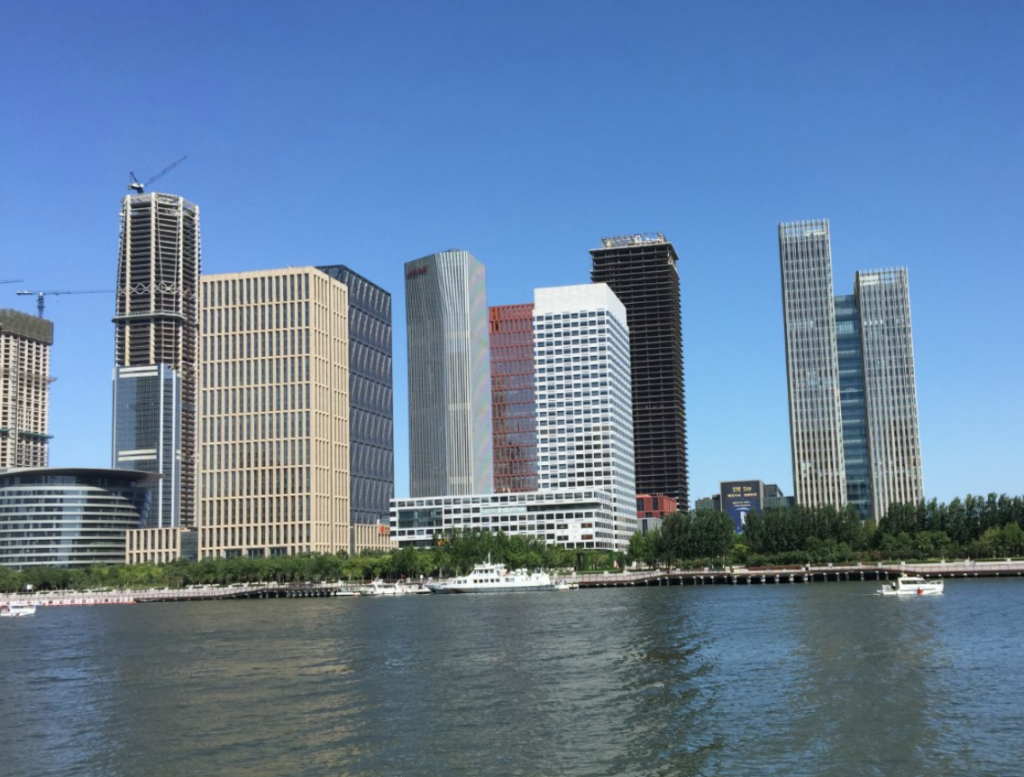
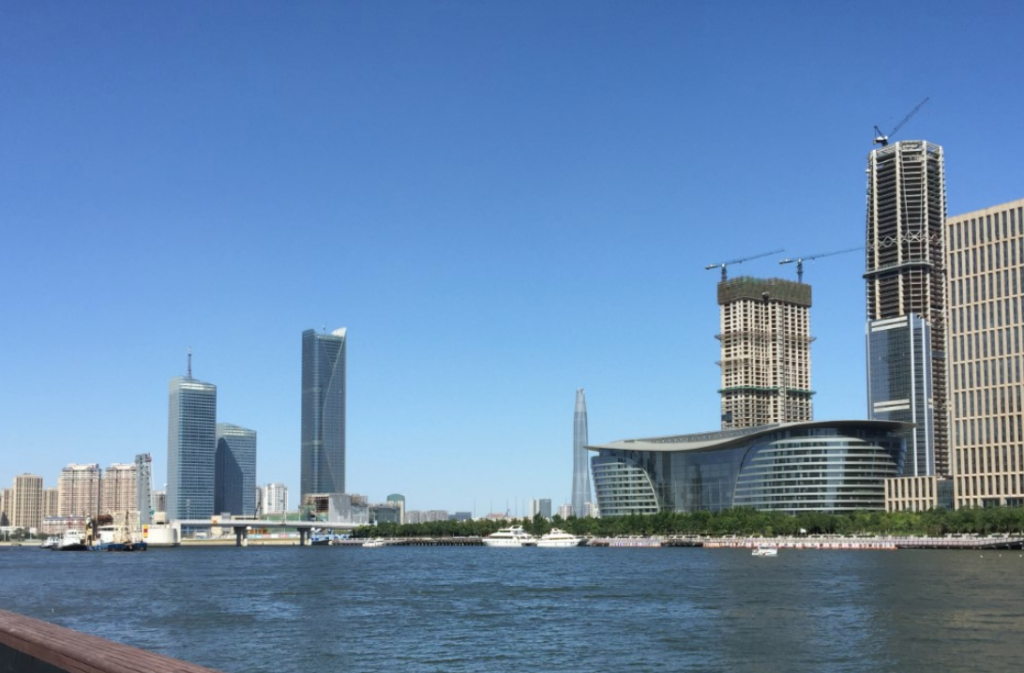
And then across the river in Xiangluowan:
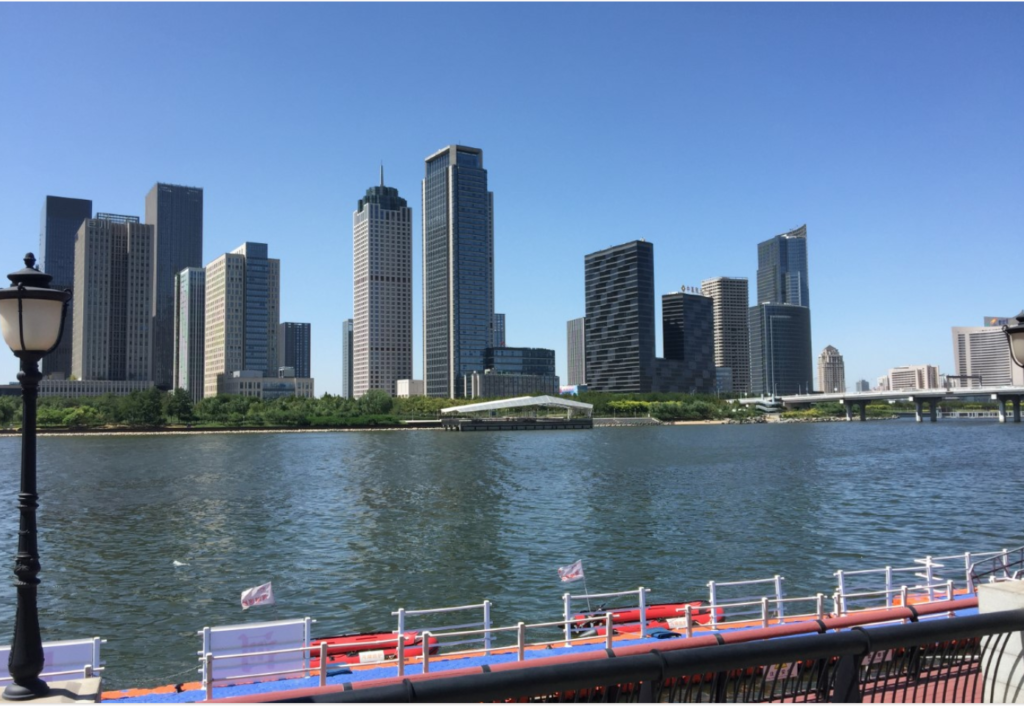
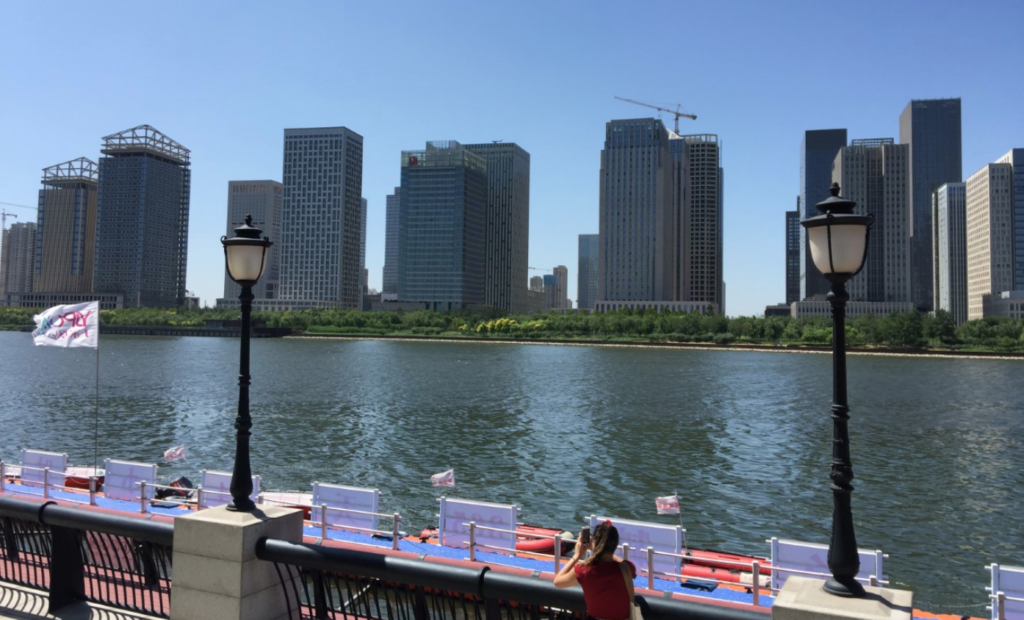
PPPS. We usually travel second class, which is quite nice. But after walking all day in the hot sun, we splurged on business class, which is nearly triple the price and double the price of first class tickets. The seats recline all the way flat, and the nice stewardess brought us a bag of 6 types of snacks and a beverage. We occupied 3 of the 5 total seats in the cabin. It was probably the most luxurious 30 minutes of my life. Yes, the tickets cost 176 yuan each, but hey, that’s only 25 bucks. China is still cheap.
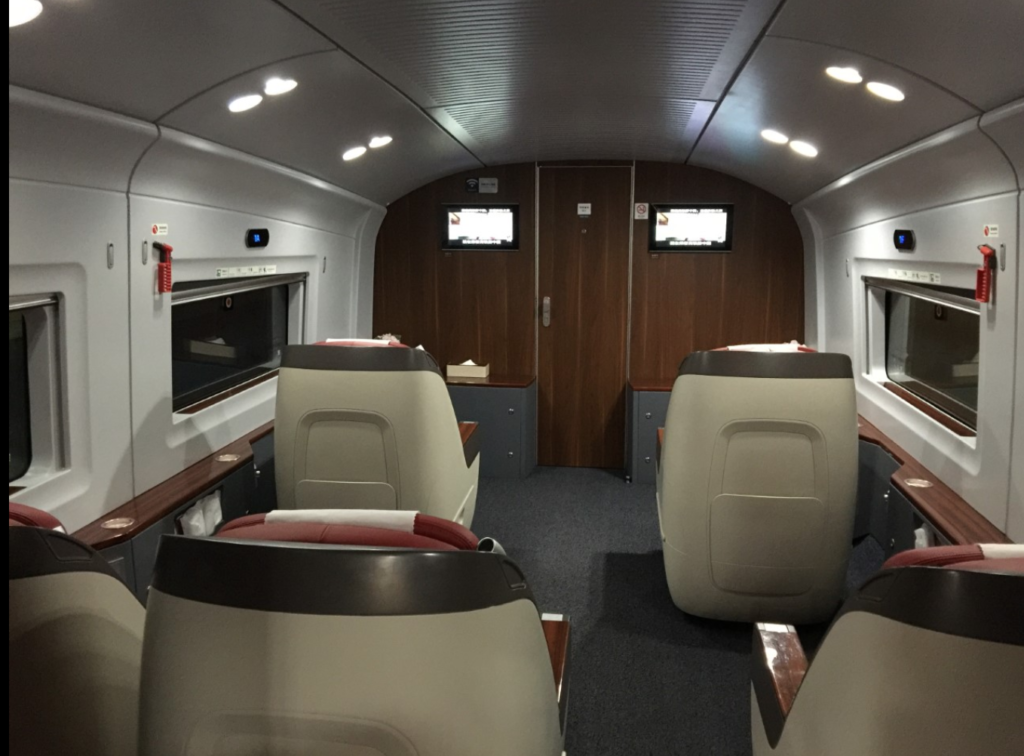
Tags:


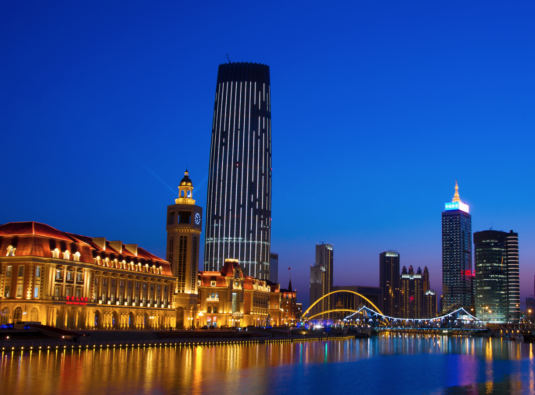
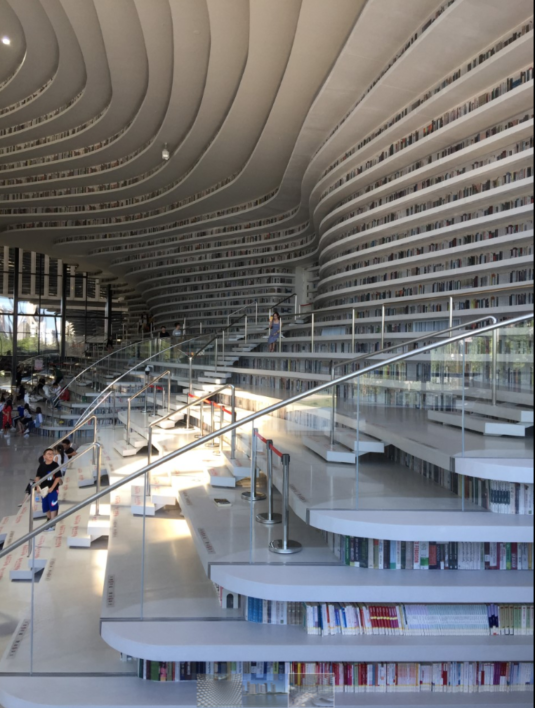
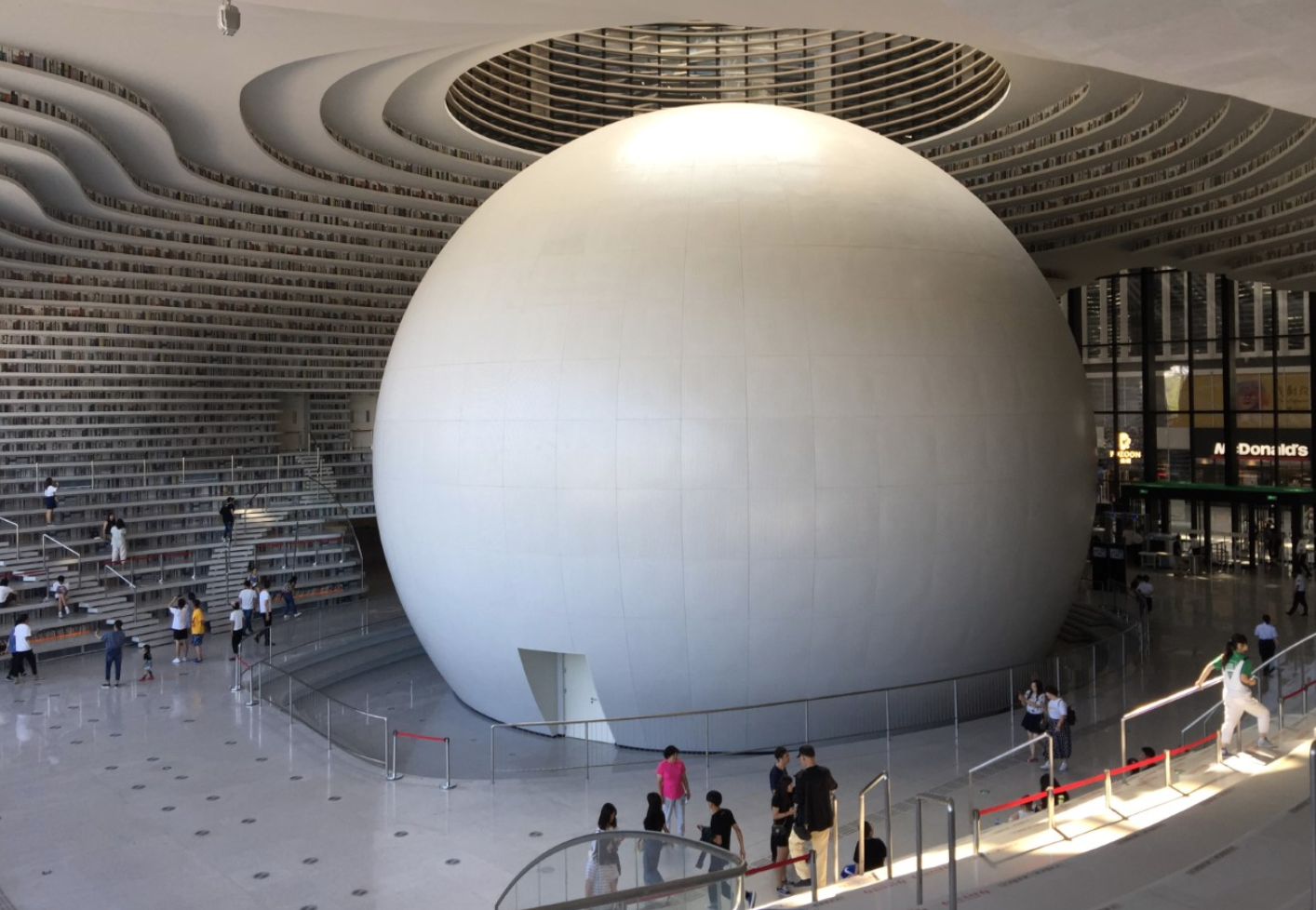
30. August 2019 at 19:41
It appears that most of the books in that library are on shelves that you can only access by lying down. Am I missing something?
31. August 2019 at 01:54
Jeff, I think that room’s mostly for show. The upper shelves aren’t even books, just pictures of books. The library has other rooms.
31. August 2019 at 02:46
What’s so frustrating is that the Chinese have gotten the hardest part (the hardware) right, but fallen down on the easier steps. There’s a lot of that in China.
Calling hardware hard and service easy might just reflect your American experience?
The Germans also have a harder time with service than hardware..
31. August 2019 at 15:08
Matthias, Yes, it’s my American perspective. We couldn’t even dream of building their high speed rail network, or big city subway systems.
2. September 2019 at 07:32
[…] 3. Scott Sumner visits Tianjin. […]
2. September 2019 at 09:22
Scott – next time in Tianjin, visit the old concession areas downtown. This is the largest and best preserved area of late 19th-early 20th century architecture I can imagine. Makes the Bund in Shanghai look like nothing. And on the re-creation of Manhattan – there are plenty of areas of new villas as well, houses that sold for millions of yuan, sitting empty. But it is not the sitting empty that gets me but the poor construction quality on expensive homes – cracked foundations, cracked sidewalks. If there were municipal building inspectors who did their job, this sort of thing would never pass. I have friends in Chicago who are private home inspectors. They would have a field day anywhere in China, if anyone would pay them to do their job. There is a phrase regarding quality – people don’t know, but money knows. The reality gives the lie to that phrase every day, as you point out with regard to relatively inexpensive but high quality train travel.
2. September 2019 at 20:07
If it’s only mostly empty, it already beats some actual Calatrava projects: See the gigantic, over budget, recently emptied out monstrosity that he built in Oviedo, Spain.
Growth cures almost all ills: A ghost district in a city with strong growth might become useful someday. A congress hall/mall in Spain’s West Virginia has worse prospects.
3. September 2019 at 07:02
Bill, Thanks. I saw that area back in 2009. I presume it’s been fixed up.
Bob, Good point.
5. September 2019 at 14:06
Nice photos Scott.
6. September 2019 at 06:23
Just astounding they now manage to pour more concrete than the rest of the world combined — they were already an outlier in 2003, now they’re… well, this.
Sad, when you think of all the poorest people in China that have little to no consumption support.
https://en.wikipedia.org/wiki/List_of_countries_by_cement_production